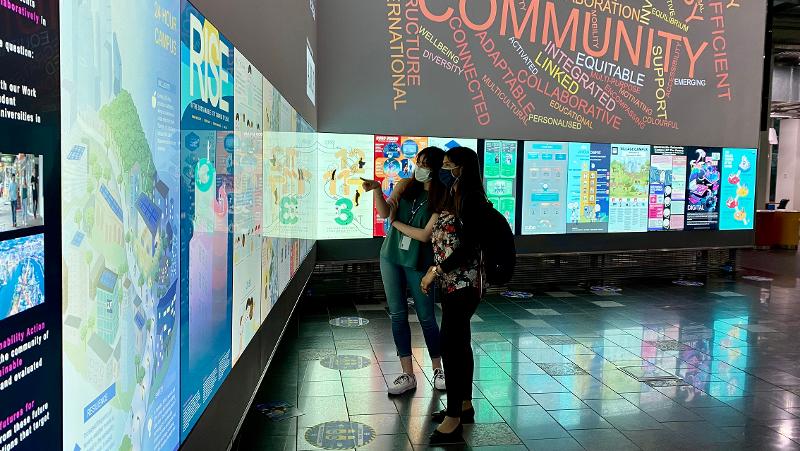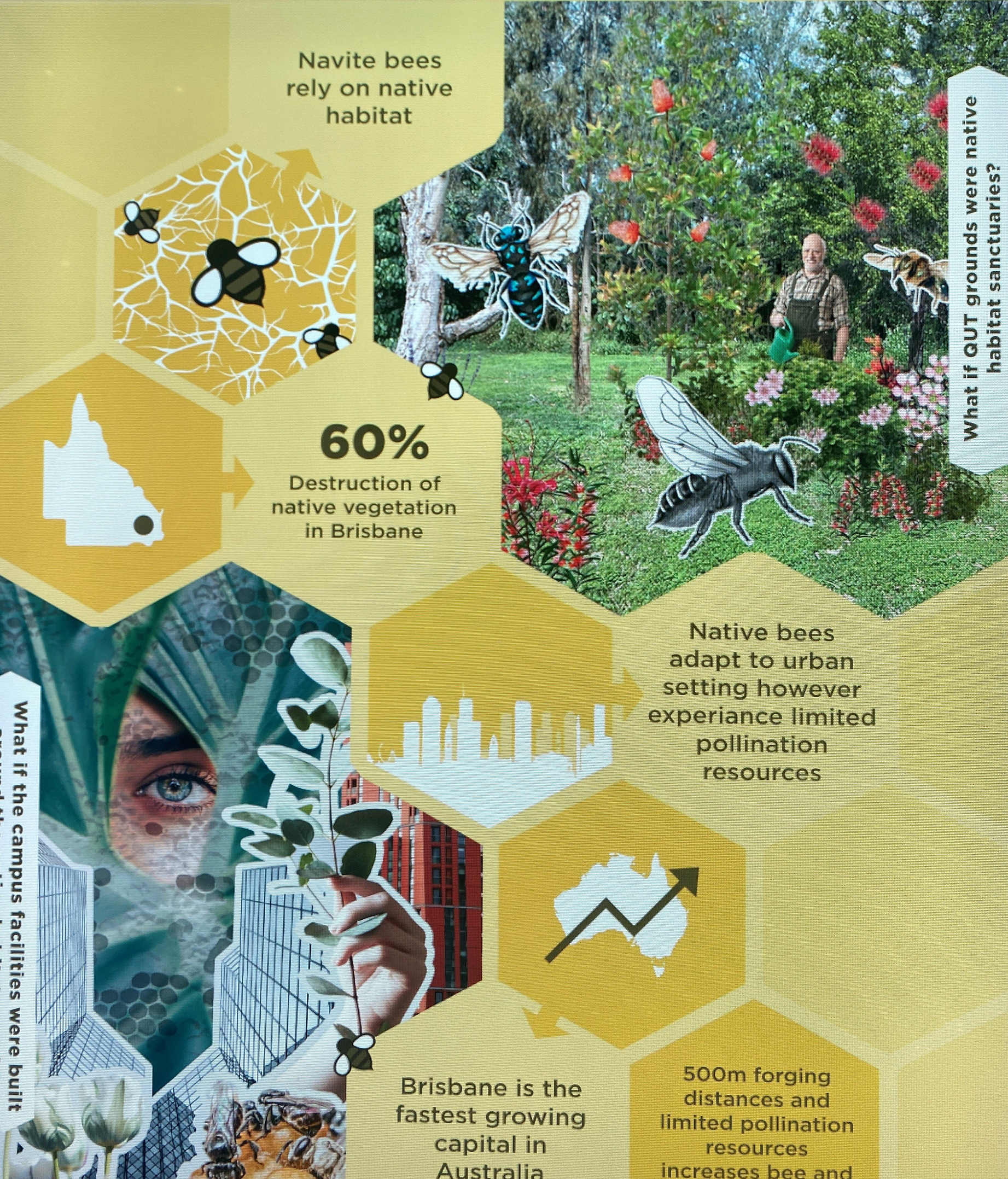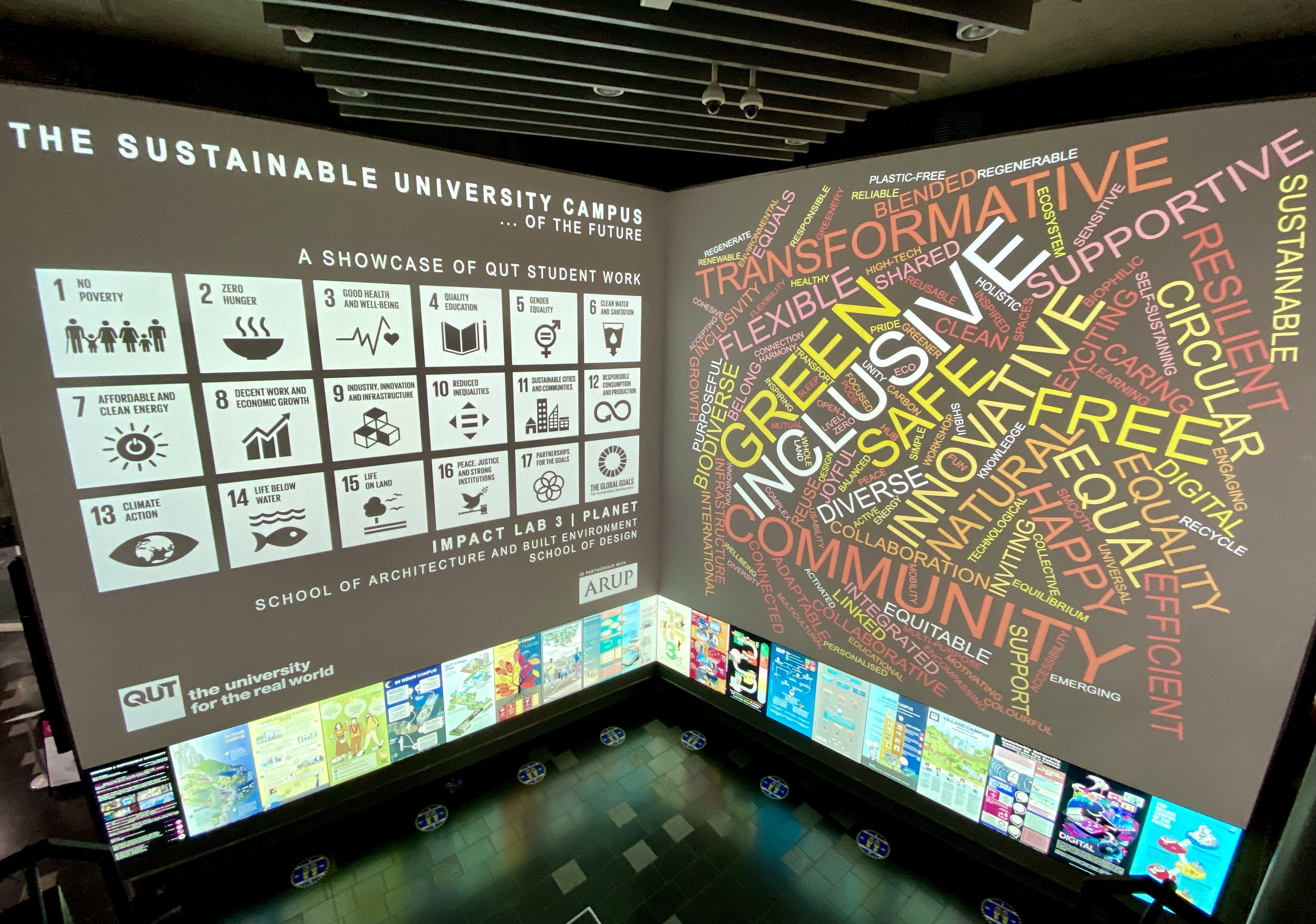
What would a sustainable university campus of the future look like? That is the question QUT’s design students are being asked to visualise in their Impact Lab 3 work integrated learning unit.
More than 450 students are working in 105 teams to workshop what they’d like QUT to look like in 2050, focusing on one of four themes: the 24-hour campus, the village campus, the digital campus or the city campus.
The overarching concept for the unit is sustainability, with the students working within the framework of QUT’s Sustainability Action Plan and Campus to Country positioning strategy as well as the United Nations’ 17 Sustainable Development Goals.
Transdisciplinary design lecturer and unit coordinator Dr Liz Brogden, from QUT’s School of Architecture and Built Environment, said students were working in teams that incorporated QUT’s seven areas of design: architecture, interior architecture, industrial design, fashion, visual communication, interaction design and landscape architecture.
She said the collaborative design process mirrored the real-world experience.
“Because they’re dealing with complex global sustainability problems these need to be understood at a systems scale,” she said.
“There’s no one disciplinary way to understand solutions to those problems – otherwise you’re going to end up with a one-dimensional solution.”
 Second-year interior architecture student Kara Bell enjoyed discovering her group members’ different skills and perspectives.
Second-year interior architecture student Kara Bell enjoyed discovering her group members’ different skills and perspectives.
“It was definitely very enriching: each of us had their own skillset, so everyone had a different aspect they worked on,” she said.
“It was so awesome to see everyone’s different strategies coming together.”
Kara said the team experience gave her a head start for the world of work.
“In terms of knowing where your personal strengths and weaknesses lie it gives you an advantage in being a team player,” she said.
“You know how rewarding it is to be honest and ask for help when you need it and be confident in your own abilities and know where they lie.”
Her team chose native bees as their stakeholder, which she said flipped traditional design ideas and produced unexpected benefits.
“To choose a non-human stakeholder was a very interesting approach because urbanisation and cities are very human-centric in design…We found that choosing bees gave us a more global and national outlook in terms of our research," she said.
Second-year interior architecture student Laura Eriksen was part of a group that designed a 24-hour campus and said designing a campus that never sleeps gave her group a lot of scope for creativity.
“It’s about providing the opportunity to be able to go to the library or get food, making sure that there’s transport that’s safe to get to, and creating self-cleaning, single-person multi-pods where students and staff can sleep, store things or study at any hour of the day or night,” Laura said.
Both projects were among those showcased at The Cube, QUT’s digital interactive learning and display space, earlier this month, when 38 teams’ collaborative design briefs were exhibited as electronic posters.

QUT design students complete four Impact Lab units covering place, people, planet and purpose during their degree, with the project themes and briefs set by industry partners to focus on real-world sustainability problems. Dr Brogden said this year QUT partnered with Brisbane staff from the international interdisciplinary design firm ARUP.
“It’s always exciting for industry to see what’s going on with universities, to engage with students and set projects that aren’t as constrained as they might be in the world of practice,” she said.
“Plus, it helps for the students to think that their work is of interest beyond the bounds of university.”
She said the work integrated learning unit did more than just teach real-world collaboration and design skills.
“Design gives students cause for optimism and hope because it enables them to visualise alternative futures and it gives them agency and an ability to help shape the future,” she said.
Laura said she appreciated unit’s practical focus.
“I think it’s cool that QUT does push us to do that,” she said.
"It’s a big part of this degree that you do these design subjects. I don’t want to just make pretty things. I want to make things that change the world.”
QUT Media contacts:
Sally Dillon, 07 3138 8666, s.dillon@qut.edu.au
After hours: Rod Chester, 0407 585 901, media@qut.edu.au

